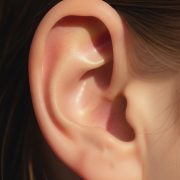
Introduction
Exercises are essential for maintaining physical fitness, improving mental health, and preventing chronic diseases. Incorporating regular exercise into daily life not only strengthens muscles and bones but also boosts cardiovascular health, enhances flexibility, and promotes overall well-being. Understanding the various types of exercises, their benefits, and how to structure a routine can help individuals achieve their fitness goals safely and effectively.
Importance of Exercises for Overall Health
Engaging in regular exercises impacts almost every system in the body. The benefits of exercising extend beyond physical fitness, contributing to emotional and cognitive health as well. Key health advantages include:
- Cardiovascular Health: Aerobic exercises improve heart function, circulation, and reduce the risk of heart disease.
- Weight Management: Consistent physical activity helps maintain a healthy body weight and reduces the risk of obesity.
- Muscle and Bone Strength: Resistance training and weight-bearing exercises prevent muscle loss and enhance bone density.
- Mental Well-being: Exercises release endorphins, which alleviate stress, anxiety, and symptoms of depression.
- Immune Support: Regular activity boosts immune function, helping the body fight off infections.
- Enhanced Flexibility and Balance: Stretching and mobility exercises reduce the risk of injuries and improve posture.
The holistic impact of exercises highlights their importance as a preventive and therapeutic tool for long-term health.
Types of Exercises
1. Aerobic Exercises
Aerobic exercises, also known as cardio, increase heart rate and breathing, improving cardiovascular endurance. Examples include:
- Running or jogging
- Cycling
- Swimming
- Brisk walking
- Dancing
Benefits:
- Improves heart and lung efficiency
- Burns calories and helps with weight management
- Enhances stamina and energy levels
- Reduces the risk of chronic diseases such as diabetes and hypertension
2. Strength Training
Strength training focuses on building muscle mass and improving strength using resistance. Tools and methods include:
- Free weights (dumbbells, barbells)
- Resistance bands
- Bodyweight exercises (push-ups, squats, lunges)
- Weight machines
Benefits:
- Increases muscle tone and strength
- Supports joint health and reduces injury risk
- Boosts metabolism and assists in fat loss
- Enhances bone density, preventing osteoporosis
3. Flexibility Exercises
Flexibility exercises involve stretching and mobility movements to maintain joint range of motion and muscle elasticity. Common techniques include:
- Static stretching (holding a stretch for 20–60 seconds)
- Dynamic stretching (controlled movements through full range of motion)
- Yoga and Pilates
Benefits:
- Improves posture and alignment
- Reduces muscle soreness and tension
- Enhances overall movement efficiency
- Lowers risk of injury during physical activity
4. Balance and Coordination Exercises
These exercises focus on stability and coordination, particularly important as we age. Examples include:
- Standing on one leg
- Heel-to-toe walking
- Tai Chi
- Stability ball exercises
Benefits:
- Prevents falls, especially in older adults
- Improves core strength
- Enhances agility and coordination
- Supports functional movements in daily life
5. High-Intensity Interval Training (HIIT)
HIIT involves alternating short bursts of intense activity with periods of rest or low-intensity exercise. Examples include:
- Sprint intervals
- Jump squats
- Burpees
- Cycling sprints
Benefits:
- Burns calories quickly and efficiently
- Improves cardiovascular and metabolic health
- Increases endurance and strength
- Can be performed in short durations, making it time-efficient
Designing an Effective Exercise Routine
Creating a balanced exercise program ensures maximum benefits and minimizes the risk of injury. Consider these steps:
1. Set Clear Goals
Identify your fitness objectives, such as weight loss, strength building, endurance improvement, or flexibility enhancement. Clear goals help tailor your exercise plan.
2. Include Variety
Incorporate different exercise types to target all major muscle groups, improve cardiovascular health, and maintain interest in the routine.
3. Schedule Consistency
Aim for at least 150 minutes of moderate-intensity aerobic activity or 75 minutes of vigorous activity weekly, along with strength training twice per week.
4. Warm-Up and Cool-Down
Start each session with a 5–10 minute warm-up to increase blood flow and end with a cool-down to promote recovery and reduce muscle soreness.
5. Monitor Progress
Track performance improvements, endurance levels, and strength gains. Adjust intensity and duration as fitness improves.
6. Listen to Your Body
Avoid overtraining by recognizing signs of fatigue, soreness, or discomfort. Rest and recovery are essential for safe progress.
7. Seek Professional Guidance
Consult certified trainers or fitness professionals for personalized programs, especially for beginners or those with medical conditions.
Exercises for Specific Needs
For Weight Loss
Combining aerobic exercises with strength training maximizes calorie burn and preserves muscle mass. HIIT is particularly effective for fat reduction.
For Strength and Muscle Building
Resistance training with progressive overload ensures muscle growth. Compound movements like squats, deadlifts, and bench presses engage multiple muscle groups for efficient results.
For Seniors
Low-impact activities like walking, swimming, yoga, and balance exercises maintain mobility, flexibility, and bone health.
For Stress Relief
Yoga, Pilates, tai chi, and moderate aerobic exercises release endorphins, calm the nervous system, and improve mental clarity.
For Sports Performance
Athletes benefit from sport-specific exercises focusing on agility, speed, endurance, and strength tailored to their discipline.
Common Mistakes to Avoid During Exercise
- Skipping warm-up and cool-down routines
- Using improper form or technique
- Overtraining without sufficient rest
- Neglecting nutrition and hydration
- Focusing only on one type of exercise
Avoiding these errors ensures safer workouts, reduces injury risks, and improves performance outcomes.
Nutrition and Recovery in Exercise
Exercise alone is not enough; proper nutrition and recovery are essential:
- Hydration: Maintain adequate water intake before, during, and after exercise.
- Balanced Diet: Include protein for muscle repair, carbohydrates for energy, and healthy fats for overall health.
- Sleep: Quality sleep enhances recovery, hormone regulation, and performance.
- Rest Days: Incorporate recovery days to prevent overuse injuries and promote muscle growth.
The Role of Technology in Exercise
Modern technology enhances fitness routines:
- Fitness apps and trackers monitor heart rate, calories, and steps.
- Online workout programs provide guidance and motivation.
- Smart equipment adjusts resistance and tracks progress in real-time.
- Virtual reality and gamified exercise experiences increase engagement and consistency.
Conclusion
Exercises are a cornerstone of a healthy lifestyle, providing extensive benefits for the body and mind. By understanding the types of exercises, designing a balanced routine, and focusing on recovery and nutrition, individuals can achieve their fitness goals and maintain long-term well-being. Integrating regular physical activity into daily life is essential for vitality, longevity, and overall quality of life.
FAQs
1. How often should I exercise to maintain good health?
Aim for at least 150 minutes of moderate-intensity aerobic activity weekly, along with two days of strength training.
2. What type of exercise is best for weight loss?
A combination of aerobic exercises, strength training, and HIIT is most effective for fat reduction and maintaining muscle mass.
3. Can exercises improve mental health?
Yes, physical activity releases endorphins, reduces stress, and improves mood, concentration, and overall mental well-being.
4. How can beginners start exercising safely?
Start with low-intensity workouts, focus on proper form, gradually increase duration and intensity, and consider guidance from a fitness professional.
5. Are there exercises suitable for older adults?
Yes, low-impact activities like walking, swimming, yoga, and balance exercises are ideal for seniors.
6. How important is stretching in an exercise routine?
Stretching enhances flexibility, reduces muscle tension, improves posture, and lowers the risk of injuries.
7. Can technology help improve exercise results?
Fitness trackers, apps, and smart equipment provide feedback, track progress, and motivate consistent exercise.






